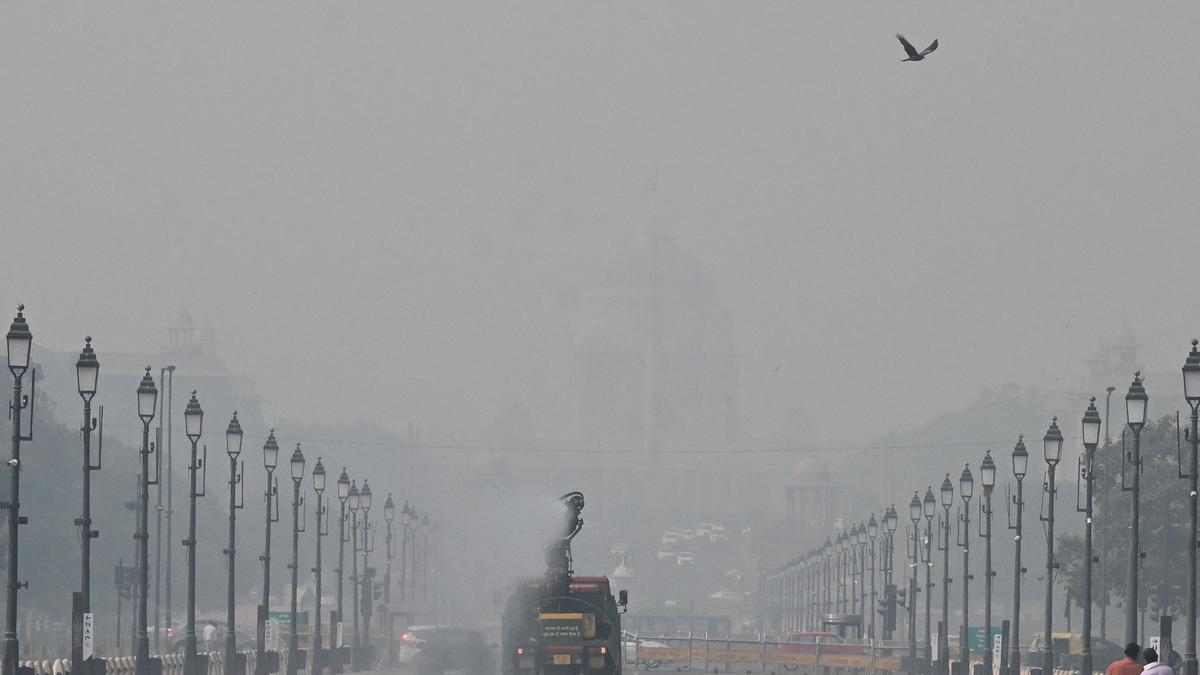
Is Delhi becoming an uninhabitable city? | Explained
The Hindu
Delhi's air pollution crisis explained: AQI, PM2.5 dominance, sources, health impacts, and ineffective government responses.
Air quality index (AQI), according to the Central Pollution Control Board (CPCB), is a measure of the concentration of eight pollutants — particulate matter (PM)10, PM2.5, nitrogen dioxide (NO2), sulphur dioxide (SO2), carbon monoxide (CO), ozone (O3), ammonia (NH3), and lead (Pb) — in the air at a monitoring location. A sub-index is calculated for each of these pollutants (not all may be measured at every station); and the worst among them is the AQI for that location. So, AQI transforms complex air quality data into an index we can understand.
Also Read:Clearing the air on Delhi’s pollution crisis
Delhi is perhaps going to become, if it has not already, an uninhabitable city for two different reasons. In winters (October-February), pollution levels peak, while during summers (April-June), the heat waves are unbearable, both affecting Delhi’s poor disproportionately. This piece concerns itself with air pollution. This article will focus on the PM2.5 in particular because it dominates the AQI reading in Delhi and is quite dangerous as it is likely to travel to the deeper parts of the lungs owing to its extremely small size, the largest of which is 30 times thinner than human hair.
Chart 1 shows how the quality of air has been over a period of seven years (2017-2023). AQI is categorised in six ranges in India. We have combined some of them to represent as: good (0-50), satisfactory to moderate (51-200), and poor to severe (201 and above). A few things stand out. One, Delhi has had only two days of healthy air per year. Two, more than half a year people are inhaling air unfit for breathing. Three, and quite remarkably, even for 2020, a lockdown year, things were only marginally better. It’s clear there is something systemically wrong with the system.
The government often tells us that stubble burning in Punjab, Haryana, and U.P. is responsible for Delhi’s pollution. It’s a half-truth. We pick the most intense days of November this year when stubble burning’s contribution to PM2.5 has been at its peak (in the range of 15-35%).
Chart 2 plots the actual AQI against a hypothetical scenario of zero stubble burning, and the result is startling. Not even on one of these days would the AQI have fallen below the very poor AQI benchmark (300). This exercise is not to downplay the role of stubble burning. It is to show that it is a red herring used by the two warring political parties, one which runs the Union Territory and the other this country, to avoid acting on the problem in any serious manner.
An extensive 2023 report prepared by IIT Kanpur, IIT Delhi, TERI New Delhi, and Airshed Kanpur shows that, even during winter months, when sources of pollution external to Delhi are at their peak, half of the PM2.5 levels can be apportioned to Delhi itself (Chart 3).













